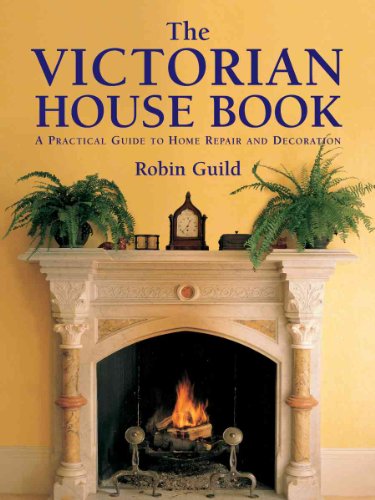Items related to The Victorian House Book: A Practical Guide to Home...

Synopsis
Historical information plus design ideas and advice for a Victorian vintage home.
[Praise for the UK edition:] Well-researched and documented... Essential for anyone interested in Victorian design and decoration.
- Library Journal
The Victorian House Book is a fascinating and essential guide to a rich and varied design age. The book details numerous interior and exterior styles -- from the High Victorian and Queen Anne Revival to the Classical and Gothic -- and showcases homes from the United States and Great Britain.
Full of inspiring ideas and fascinating information, the book is organized room by room including conservatories, libraries and billiard rooms. More than 500 color photographs and 1,500 line drawings show the beauty and elegance of Victorian homes and reveal details of their architectural features. A wide range of design elements is examined, including:
- House styles and plans
- Traditional colors and finishes
- Construction features
- Furniture styles
- Roofs and gables
- Ceilings and fireplaces
- Wallpapers and upholstery
- Decorative glass and moldings
- Curtains and floor coverings
- Railings and ironwork.
The Victorian House Book also includes a trouble-shooting guide with information and advice on renovation techniques and care and maintenance. A source list provides the names, addresses and websites of manufacturers and suppliers.
"synopsis" may belong to another edition of this title.
About the Author
Robin Guild established an international reputation as an interior designer, with a client list that included celebrities and royalty. He designed Ralph Lauren's groundbreaking London stores, co-founded Designer's Guild in London, restored a wide variety of Victorian homes, and wrote several highly popular design books, including The Finishing Touch and Homeworks.
"About this title" may belong to another edition of this title.
FREE shipping within U.S.A.
Destination, rates & speedsSearch results for The Victorian House Book: A Practical Guide to Home...
The Victorian House Book : A Practical Guide to Home Repair and Decoration
Seller: Better World Books, Mishawaka, IN, U.S.A.
Condition: Good. 4th. Former library book; may include library markings. Used book that is in clean, average condition without any missing pages. Seller Inventory # 4685007-6
Quantity: 2 available
The Victorian House Book : A Practical Guide to Home Repair and Decoration
Seller: Better World Books, Mishawaka, IN, U.S.A.
Condition: As New. 4th. Used book that is in almost brand-new condition. Seller Inventory # 53478136-6
Quantity: 1 available
The Victorian House Book: A Practical Guide to Home Repair and Decoration
Seller: ThriftBooks-Dallas, Dallas, TX, U.S.A.
Hardcover. Condition: Good. No Jacket. Pages can have notes/highlighting. Spine may show signs of wear. ~ ThriftBooks: Read More, Spend Less 4.14. Seller Inventory # G1554073715I3N00
Quantity: 1 available
The Victorian House Book: A Practical Guide to Home Repair and Decoration
Seller: Toscana Books, AUSTIN, TX, U.S.A.
Hardcover. Condition: new. Excellent Condition.Excels in customer satisfaction, prompt replies, and quality checks. Seller Inventory # Scanned1554073715
Quantity: 1 available

